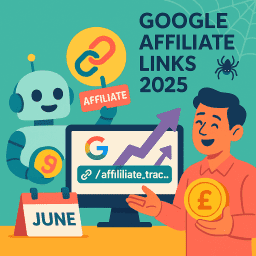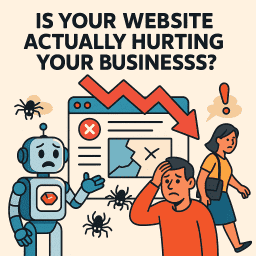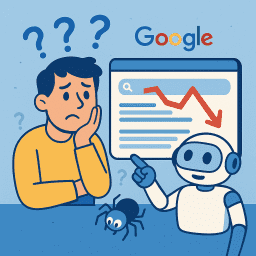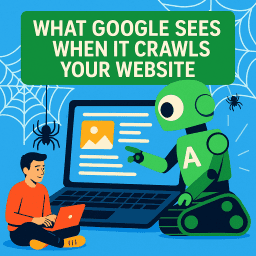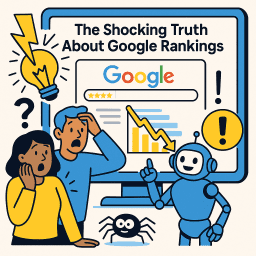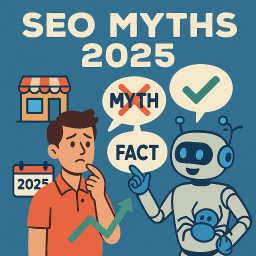Toxic Backlinks in 2025: What Still Hurts Your SEO Ranking
🚫 What you should (and shouldn’t) worry about in link profiles
⚡ The Truth About Toxic Links: Should You Worry?
Toxic backlinks are incoming links from low-quality, spammy, or manipulative websites that could—at least in theory—harm your rankings in Google. These might come from link farms, adult sites, comment spam, or shady directories. But the real question in 2025 is: do they still matter?
🔍 Google’s Evolving View on Bad Links
Back in the Penguin era, Google aggressively penalised websites with spammy link profiles. Disavowing became standard advice. But since Penguin 4.0 in 2016, Google has shifted to ignoring bad links rather than penalising you for them. That means most toxic backlinks won’t hurt you—they’ll simply have no effect at all.
📉 When Should You Worry?
While Google’s default stance is to disregard poor-quality links, there are still situations where you might want to act:
- 🔗 You’ve received a manual action in Search Console
- 📉 You notice a major traffic drop and suspect negative SEO
- 🕵️ You’re in a high-risk vertical like gambling, finance, or health
If none of the above apply, panicking over every bad link is likely a waste of time and energy.
🧰 Should You Use the Disavow Tool?
The disavow tool is still available in Google Search Console—but Google strongly advises against using it unless you’re certain the links are harming your site. Overuse can backfire by removing links that might be neutral or even beneficial.
⚖️ Toxic Link Examples
- 🚨 Irrelevant foreign-language domains with no relation to your content
- 📢 Low-quality press releases published on thousands of sites
- 💬 Spammy forum profiles or comment links
- 🏭 Mass-produced directory links from networks that sell SEO packages
🔍 How to Identify Toxic Backlinks
Use tools like Ahrefs, SEMrush, or Google Search Console to evaluate your link profile. Red flags include:
- 🔥 Extremely low domain ratings (DR/DA)
- 📉 High link-to-content ratio
- 📍 Country mismatch with your target audience
- ⚠️ Links marked with “Warning” or “Spam” indicators in backlink tools
✅ What You Should Focus On Instead
Rather than chasing bad links, focus on earning good ones:
- 📰 Create content worth linking to
- 🤝 Build partnerships with reputable websites
- 📣 Use digital PR to promote high-value assets
- 🎯 Target niche-specific directories and resources
💬 Summary: The 2025 Verdict
Toxic backlinks aren’t the threat they once were. Google now prefers to ignore them unless there’s a clear signal of manipulation. The real danger? Wasting time on them instead of building better links and content.
“Worried about toxic backlinks? Google probably isn’t. Focus on what you can control—like quality content and legitimate authority.”
— David Roche
📝 Recap and Clarify: Post-Specific FAQs
What are toxic backlinks?
Toxic backlinks are low-quality or spammy links from suspicious websites that can harm your site’s reputation and search rankings in Google’s eyes.
Can toxic backlinks still hurt SEO in 2025?
Yes. While Google claims to ignore many bad links, large volumes of unnatural or manipulative backlinks can still trigger manual actions or ranking drops.
How can I identify toxic backlinks?
Use tools like Google Search Console, Ahrefs, or Semrush to analyse your link profile. Look for links from irrelevant, spammy, or deindexed domains.
What is link spam according to Google?
Link spam includes unnatural links built to manipulate rankings—such as link farms, paid links without disclosure, or excessive exact-match anchor text.
Should I disavow toxic backlinks?
Only if you’re confident the links are harming your rankings and you’ve tried contacting webmasters first. Use Google’s disavow tool with caution.
What’s the process to disavow backlinks?
Create a .txt file listing the domains or URLs you want to disavow, then upload it to the Google Disavow Tool via Search Console under legacy tools.
Does Google penalise all bad backlinks?
No. Google now claims to ignore many poor-quality links automatically, but extreme cases or obvious manipulation can still lead to penalties.
How often should I audit my backlink profile?
Ideally every 3–6 months, or immediately after noticing sudden ranking drops, negative SEO attacks, or link-building campaigns by competitors.
What are examples of good backlinks?
High-quality backlinks come from trusted, relevant websites in your niche—such as industry blogs, digital PR mentions, or editorial citations.
Can competitors harm me with toxic backlinks?
In rare cases, yes. This is called negative SEO. Google usually ignores these links, but if rankings drop suspiciously, investigate and consider disavowing.




